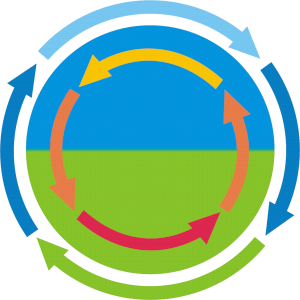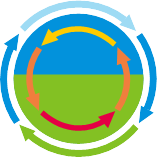B01
Impact analysis of surface water level and discharge from the new generation altimetry observations
PD Dr.-Ing. L. Fenoglio
University of Bonn | +49 228 73-3575 |
Summary
Surface water level and river discharge are key observables of the water cycle and among the most sensible indicators that integrate long-term change within a river basin. The new generation of spaceborne altimeters includes Delay Doppler, laser and bistatic SAR altimeter techniques. The central hypothesis of B01 is that these new observations outperform conventional altimetry (CA) and in-situ measurements providing (a) surface water levels and discharge of higher accuracy and resolution (both spatial and temporal), (b) new additional parameters (river slope and width) and (c) better sampling for flood event detection and long-term evolution, providing valuable new information to the CRC.
Phase 1 addresses two research questions: „How can we fully exploit the new missions to derive water level, discharge, and hydrodynamic river processes“ and „Can we separate natural variability from human water use“?
For this, B01 monitors with space observations water height change and water exchange between rivers, lakes and reservoirs and the impact of natural and human disturbances. River discharge Q is the primary product of B01, that is made available in the CRC modelling and for assimilation in the IMS.
A multi-sensor database is built and used in the IMS, together with C- and D-projects. River discharge innovatively derived from SWOT measurements of river slope, height and width will enable us to validate these datasets and approach.
B02
Towards a better understanding of moisture responses to radiative forcing
Prof. Dr. S. Fiedler
University of Heidelberg | +49 6221 54-6352 |
Summary
The project B02 systematically assesses the climate forcing and response for atmospheric composition changes from a global perspective and connects to regional studies in the CRC. The project uses output from the Coupled Model Intercomparison Project Phase 6 (CMIP6) paired with observational data, and performs own simulations for desert-dust aerosols and climate change. Moreover, the leading roles in the framework of the CMIP phase 7 (CMIP7) enables the project to provide aerosol forcing data and the new experiment protocol of the new Aerosol and Chemistry Model Intercomparison Project (AerChemMIP2), listed for CMIP7. In so doing, the project contributes to a better understanding of the role of short-lived climate forcers such as aerosol particles in a warmer world.
B03
Deep learning for satellite-based land use and land cover reconstruction
Prof. Dr. Ribana Roscher
University of Bonn | +49 228 73-60854 |
Summary
The goal of this project is the reconstruction of land use and land cover across Europe from optical satellite data using deep learning. To this end, we will develop spatio-temporal deep neural networks that consider the specific biogeographical characteristics of the regions of interest in order to ensure a high generalization capability across the study region. Furthermore, predictive uncertainties for the derived land use and land cover maps will be determined and the model’s capabilities in the context of multi-task learning will be explored. Finally, the potential of generated data for data augmentation purposes will be evaluated.
B04
Probabilistic land use
Prof. Dr. Thomas Heckelei
University of Bonn | +49 228 73-2332 |
Dr. Hugo Storm
University of Bonn | +49 228 73-60828 / +49 157 75745561 |
Summary
Agricultural land use practices, such as crop choice and irrigation decisions, influence the temporal and spatial distribution of water and energy fluxes. In B04 we generate crop and irrigation maps that cover Europe at a 1x1 km resolution from 1990 - 2020 and that help model those fluxes. Importantly, the generated maps are consistent with existing knowledge, for example on regional crop production quantities. We apply Bayesian statistical approaches and Machine Learning to incorporate various types of information sources, such as soil and climate maps, survey data, economic statistics, and remote sensing data. The maps are probabilistic in nature, meaning that they transparently reflect data and model uncertainty.
B05
Towards a dynamic representation of irrigation in land surface models
Prof. Dr. Stefan Siebert
University of Göttingen | +49 551 39-24359 |
Summary
In B05 we analyze the impact of climate variability on the extent of irrigated crops, irrigation water requirements, and irrigation water use. The impact of the dynamic irrigation data on spatial patterns, dynamic trends of water storages, and related drying and wetting patterns across the project regions will be analyzed as well. To achieve the objectives, we systematically collect sub-national statistics providing the extent of irrigated lands (total and for specific crops) for the Europe / Euroasia modeling domain for the period since 1990. The survey based statistics are combined with an annual drought indicator computed with the Global Crop Water Model (GCWM) to obtain relationships between the extend of irrigated land and the drought condition in the specific years. Then these relationships are being applied to gap-fill the available survey based statistics. Using high resolution crop shares provided by B04 and data for area equipped for irrigation, the sub-national statistics are dis-aggregated to obtain a novel dataset of annual irrigated and rainfed crop shares at 1 km resolution, across Europe and for the period since 1990. The new annual irrigation database will be applied in community land model (CLM) to quantify differences in dynamics and trends of irrigation water use across the region compared to the use of the current static data products and to quantify the impact of irrigation on the regional climate. This requires close collaboration with C01, D02 and Z04.

